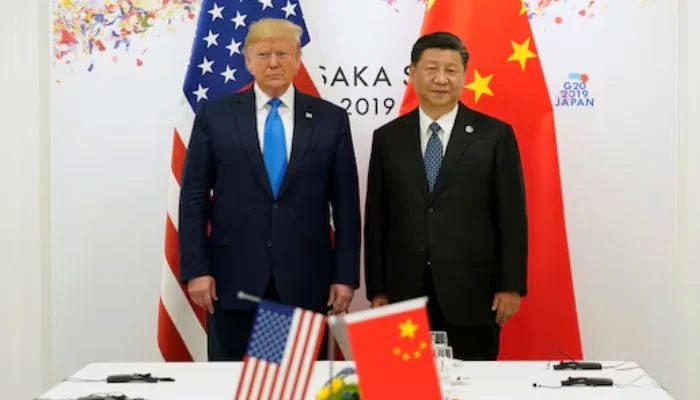
China – US – (Special – Correspondent / Web Desk) – US President Donald Trump signed an order on Monday delaying higher tariffs on Chinese goods. The decision came just hours before a trade truce between Washington and Beijing was set to expire.
According to the White House, the suspension of higher tariffs will now remain in place until November 10.
“I have just signed an Executive Order extending the Tariff Suspension on China for another 90 days,” Trump posted on his Truth Social account. The truce on increased tariffs had been scheduled to end Tuesday.
Earlier this year, both the US and China raised tariffs sharply on each other’s goods, pushing some rates to triple digits and creating stress in global trade. In May, however, they agreed to a temporary reduction—the US rate dropping to 30% and China’s to 10%.
These reduced rates will now continue until November or until a new agreement is reached.
Almost at the same time as Trump’s announcement, China’s state media outlet Xinhua reported that Beijing would also extend its side of the truce for 90 days from August 12. This means China will maintain its 10% duty and suspend or remove certain other trade restrictions as outlined in the Geneva joint declaration.
In Monday’s executive order, the White House repeated its stance that large and long-lasting US trade deficits are a serious threat to national security and the economy. It also acknowledged China’s recent actions to address US concerns during ongoing trade talks.
Some experts remain cautious. William Yang from the International Crisis Group warned that Beijing might avoid making major concessions and could use rare earth exports as leverage against Washington.
Sean Stein, president of the US-China Business Council, called the extension “critical,” saying it gives both sides time to work toward a stable trade deal. A successful agreement could lead to a Trump-Xi summit later this year, said Wendy Cutler from the Asia Society Policy Institute. However, she added that “this will be far from easy.”
Since Trump took office, China’s tariffs have risen and fallen sharply. They started with a modest 10% increase in February, then climbed repeatedly during trade disputes, hitting a peak of 145% in April before being pulled back to the current 30% rate.
Lahore Court Orders Qureshi’s Release After May 9 Acquittal
Even though both countries agreed in May to cool tensions after talks in Geneva, progress has been uneven. Meetings in London and Stockholm saw fresh disagreements, with US officials accusing China of breaking parts of the pact.
On Sunday, Trump urged China to “quickly quadruple its soybean orders” as a step toward balancing trade. China’s exports have been strong in 2024, rising 5.8% year-on-year in June despite the trade war.
Since returning to the presidency in January, Trump has also imposed a 10% “reciprocal” tariff on almost all trading partners to address what Washington views as unfair trade practices. Last Thursday, these rates increased for dozens of economies, reaching up to 41% for Syria.
The European Union, Japan, and South Korea now face a 15% US duty on many products. Some items, like steel, aluminum, and goods under investigation, such as pharmaceuticals and semiconductors, remain separately targeted.
Trump confirmed Monday that gold imports will not face additional tariffs, easing concerns caused by earlier customs announcements.
The president has also targeted individual countries, including Brazil over political issues involving former president Jair Bolsonaro and India over its purchase of Russian oil. Canada and Mexico continue to operate under a different tariff system.





Comments are closed, but trackbacks and pingbacks are open.